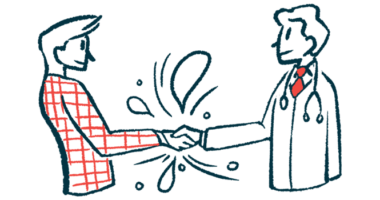Tambourine awards $5M to eight research projects into ALS
Charitable group supports global work into understanding, treating disease

The Tambourine ALS Breakthrough Research Fund has committed more than $5 million in funding to eight research projects aiming to better understand, diagnose, and treat amyotrophic lateral sclerosis (ALS).
A first call for proposals was launched in May 2023 by Tambourine Philanthropies, a charitable foundation established by Ben and Divya Silbermann. It aims to address access and inclusion challenges faced by people living with ALS and boost research into the neurodegenerative condition.
The ALS Breakthrough Research Fund builds on a report, released in 2022 by Tambourine in partnership with the Milken Institute Science Philanthropy Accelerator for Research and Collaboration (SPARC), that showed gaps in ALS funding and suggested ways to advance research.
Tambourine, a charitable foundation, aims for breakthroughs in ALS research
It highlighted a greater need for basic and discovery-focused science intending to better understand the disease’s causes and mechanisms — the exact kind of research that the recent funding is designed to support.
“We created the ALS Breakthrough Research Fund to support novel approaches to diagnose and treat ALS,” Divya Silbermann said in a news release. “Today, ALS is a devastating disease for patients and families. We are excited to support scientists working to change that reality.”
ALS causes damage to motor neurons, the nerve cells that control muscles used in voluntary movement. As muscles become weaker over time, patients develop a range of disease symptoms, such as trouble moving or breathing. There is no single test to diagnose ALS, and no cure is yet available.
Here are brief descriptions of the eight funded research projects and the scientists leading them:
- Bahareh Ajami, PhD, at Oregon Health Science University, will work to understand why some motor neurons appear more vulnerable to damage than others. Ajami’s project also will look into microglia, immune cells that reside in the brain and become overly active in ALS, contributing to damage.
- To get a better view of how different cells interact in ALS, Jimena Andersen, PhD, with Emory University in Georgia, will develop a 3D model that mimics the connection between the brain, spinal cord, and muscles of patients. The model then will be used to study mechanisms leading to the disease, and how to treat it.
- In Italy, Marianna Leonzino, PhD, in collaboration with Pablo Colombi, PhD, will investigate whether there is a shared molecular mechanism between familial ALS and sporadic ALS. Their findings could pave the way to new treatments targeting these two disease types.
- Toxic clumps or aggregates of the TDP-43 protein often are found in patients’ motor neurons. A project led by Magdalini Polymenidou, PhD, and Martin Muller, PhD, both with the University of Zurich, will focus on understanding how those clumps affect the structure and function of synapses, the regions where neurons communicate with one another.
- Ryan West, PhD, of the University of Sheffield in England, will focus on sporadic ALS. By combining experimental manipulation with computer modeling of genetic data collected through the research Project MinE, West’s team will assess how gene mutations and environmental factors interact to cause sporadic ALS, cases that lack a family history of the disease.
- Clive Svendsen, PhD, at Cedars-Sinai Medical Center in California, will lead his colleague Michael Workman, PhD, and Earnest Fraenkel, PhD, with the Massachusetts Institute of Technology, in using robotic imaging and artificial intelligence to decode specific molecular signatures and subtypes of ALS. A goal is to advance the development of personalized treatments.
- A team led by Caroline Rouaux, PhD, in France, and Sabine Liebscher, MD, PhD, in Germany, will determine if an overactive motor cortex, a brain region that directs the body’s movements, could serve as a biomarker for diagnosing and predicting ALS progression. The scientists also will explore the use of noradrenaline, which is found at low levels in the motor cortex of patients, as a potential treatment for ALS.
- A project by Hynek Wichterle, PhD, at Columbia University in New York, will focus on understanding the cellular mechanisms involved in protein breakdown and identifying potential therapeutic targets. This work could lead to new treatments for ALS and other neurodegenerative diseases marked by protein degradation.
“The Milken Institute SPARC program has seen firsthand how important philanthropic investment in science is to accelerating discovery to generate new therapies for patients and tools for medicine,” said Cara Altimus, PhD, managing director of Milken Institute SPARC.
“The Tambourine ALS Breakthrough Research Fund is an inspiring example of a philanthropic program with a focus on driving these breakthroughs by looking for standout science and innovative ideas,” Altimus added. “This is just what ALS needs right now.”







